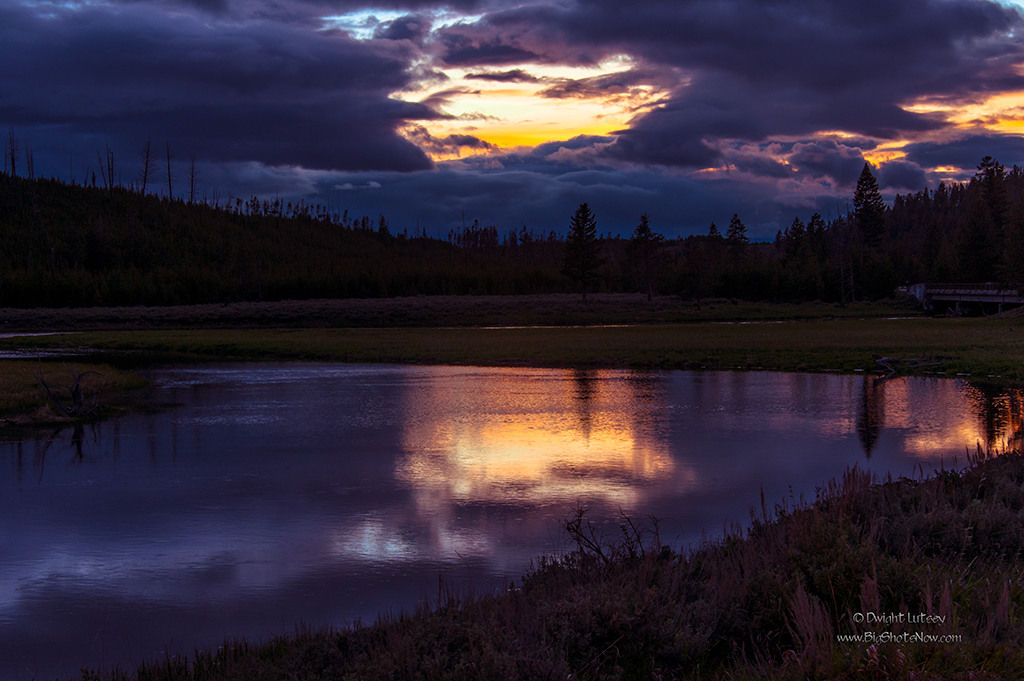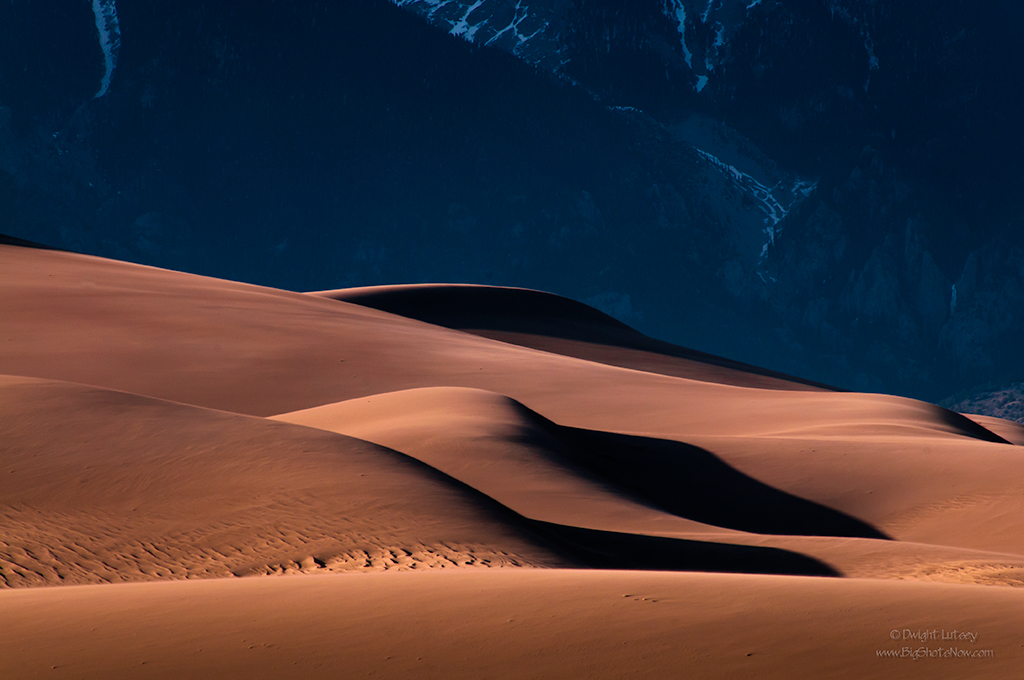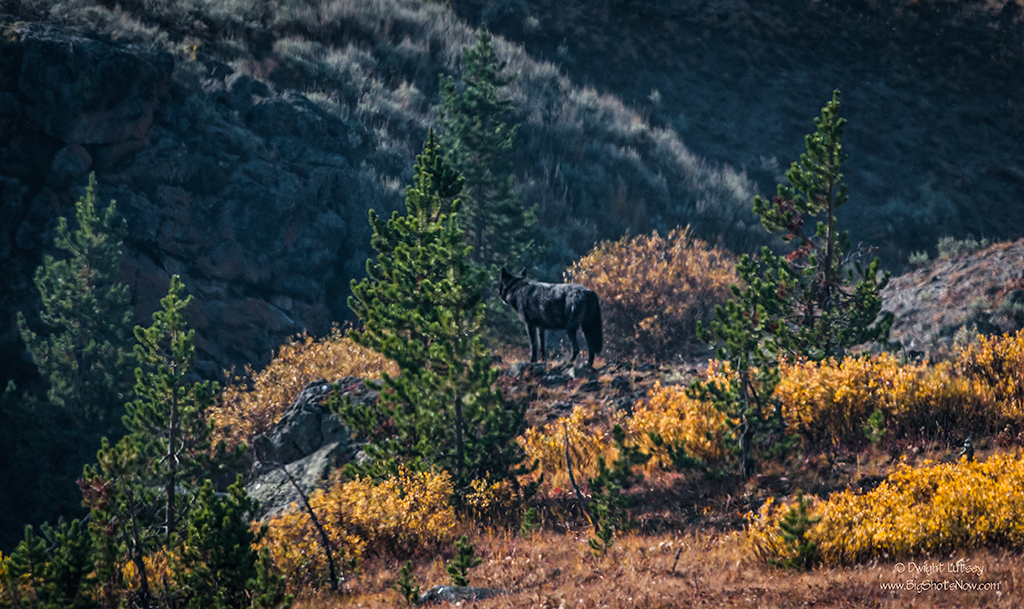
During our recent semi-annual inspection trip we have looked at many of the functions of Yellowstone National Park and found them to be mostly functional, performing as expected in a timely and efficient manner. We had been closely monitoring the animals and their behavior as that is what the majority of visitors to the park key on. Show them a wolf, or a grizzly, or a marmot, even a buffalo and they think everything is right with the world and they’re content with their visit.
But there are the more sophisticated visitors that come to the park for more subtle pleasures. Something quieter than the sound of a wolf pack murdering a buffalo, or the frenzied screaming of a busload of tourists sighting their first chipmunk. These folks are out viewing the park at different times than the average sightseer. They want beauty and solitude and spectacular views filled with color and drama while everyone else is back at the hotel watching reruns of Jeopardy, trying to find the number of the pizza place that delivers and raiding the minibar.
Consequently there are different items to be checked, to make sure the park is ready for these types of visitors too, such as reflectivity, which as you know is the ability to accurately mirror the sky and all its colors on a body of some reflective surface such as a lake or river, thereby adding to the overall viewing experience.
Checking this function is a little trickier than one might imagine, as there are forces at work here that the average viewer doesn’t take in immediately. Such as placing the reflective surface at the proper angle so that the setting sun shows up correctly on the surface. The cloud generation system must be at peak efficiency to produce the proper amount of cloud material at the time the sun is setting. This means maintaining an incredible timing system. You don’t run that on a Timex. Also the surface of the water must be properly prepared and correct filters and coatings maintained in the proper combination so the colors are even more intense in the reflection than in the sky.
Doing all this is hard, like Chinese arithmetic, or trying to figure out what was going on in Jane Fonda’s head when she toured North Viet Nam. Hard, really hard. Our usual spot to see if this function is working is that gentle bend in the Madison river just a little ways above the log jam not far from seven mile bridge. The only way to observe this phenomenon is to be there about 9:00 at night near the end of May. That’s it. You pull up at the parking area, get out, walk down to the shore with your clipboard and check off ‘Yes’ on the line item, “Reflectivity On: Yes or No”. That’s all there is to it. We’ve been doing these inspections for many years now and never, ever have we had to check the ‘No’ box. Well that’s not exactly true. There have been the few times when the cloud generator went completely nuts and produced way too many clouds and even rain storms but then the park staff sets up a roadside notification saying “Reflectivity is turned off for a short time. This is not a permanent problem. Please be patient. Reflectivity will be restored momentarily. We have had to send to Bozeman for a new O-ring for the cloud generator and expect it to be back on-line before Jeopardy is over. Thank you for your understanding.” That only happened to us once so we can’t really count it as a common problem.
All of the while we were evaluating this situation and remarking on how reflective this reflectivity actually was, only two other cars pulled up to join us. They were really nice people. They were from out of town, some urban area or other and set up portable lawn chairs and drank wine. Pretty good wine too, out of bottle not the boxed stuff you get at Value Jug for 3 bucks a box, which tells us that the person who seeks out reflectivity is just a skoshy bit more cosmopolitan than the average slam-bam, “I can do the park in an hour and fifteen minutes” kind of visitor. We liked these people. At times like this you fall into quiet conversations about life and beauty and how you don’t really care for Jeopardy reruns. They seemed surprised that there is an organization like The Institute with its modest but incredible Director, that cares so much about places like Yellowstone National Park that we would take it on ourselves to make these inspection trips and publish the results for the public at large to see. We allowed that we were glad too.
Note : To those of you tuning in late the following posts will catch you up on preceding events. There is no extra charge for this service, it is included in the cost of admission. We know you don’t want to miss a minute of our fascinating but undocumented report.
http://www.bigshotsnow.com/the-words-out/
http://www.bigshotsnow.com/announcement-13/
http://www.bigshotsnow.com/yellowstone-passes-inspection/
http://www.bigshotsnow.com/ghosts-in-the-darkness/
http://www.bigshotsnow.com/you-dont-see-that-every-day/
http://www.bigshotsnow.com/now-are-the-foxes/
http://www.bigshotsnow.com/into-each-park-some-rain-must-fall/
http://www.bigshotsnow.com/through-the-keyhole/




You must be logged in to post a comment.